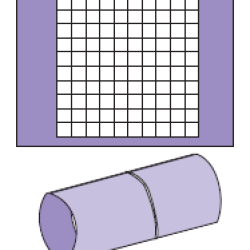Source Institutions
Source Institutions
Add to list Go to activity
Activity link broken? See if it's at the internet archive

In this activity related to indoor air pollution, learners build take-home dust catchers with wax paper and petroleum jelly. After a set monitoring period, learners conduct representative particle counts using a comparison grid. Learners will also graph the results. This activity can be enhanced by sharing the "Health Hazards of Lunar Dust" Podcast with learners (see related resource link). This resource includes background information, variation ideas and a handout for learners in both English and Spanish.
- 30 to 45 minutes
- 1 to 2 hours
- $5 - $10 per group of students
- Ages 8 - 14
- Activity, Experiment/Lab Activity, Lesson/Lesson Plan
- English, Spanish
Quick Guide
Materials List (per group of students)
- Baking soda (or cornstarch, baby powder, or dusty eraser)
- Cotton balls
- Flashlight with batteries
- Glue sticks
- Knife, plastic (or spreader)
- Petroleum jelly
- Wax paper
- Hand lenses (magnifiers)
- Scissors
- Rubber bands, large
- Sheets of construction paper, 4-1/2 x 12 in. (see Setup)
- Sheets of marked graph paper, 10 x 10 cm
- Copies of Make a Dust Catcher student sheet
Subjects
-
Earth and Space Science
-
Earth Structure
- Atmosphere
-
Earth Structure
-
Life Sciences
-
Ecology
- Human Impact
-
Human Body
- Health and Nutrition
- Respiration
- Immune System
-
Ecology
-
Mathematics
-
Data Analysis and Probability
- Data Analysis
- Data Collection
- Data Representation
- Measurement
- Reasoning and Proof
- Representation
-
Data Analysis and Probability
-
The Nature of Science
-
Science and Society
- Risks and Benefits
-
The Scientific Process
- Conducting Investigations
- Gathering Data
- Formulating Explanations
- Communicating Results
-
Science and Society
Informal Categories
- Nature and Environment
Audience
To use this activity, learners need to:
- see
- read
- touch
Learning styles supported:
- Involves teamwork and communication skills
- Uses STEM to solve real-world problems
- Involves hands-on or lab activities
Other
This resource is part of:
Access Rights:
- Free access
By:
- Moreno, Nancy P. ; Tharp, Barbara Z. ; Dresden, Judith
Rights:
- All rights reserved, Baylor College of Medicine, 2007
Funding Sources:
- National Institute of Environmental Health Sciences (NIEHS) of the National Institutes of Health (NIH), R25 ES06932
- National Institute of Environmental Health Sciences (NIEHS) of the National Institutes of Health (NIH), R25 ES010698
